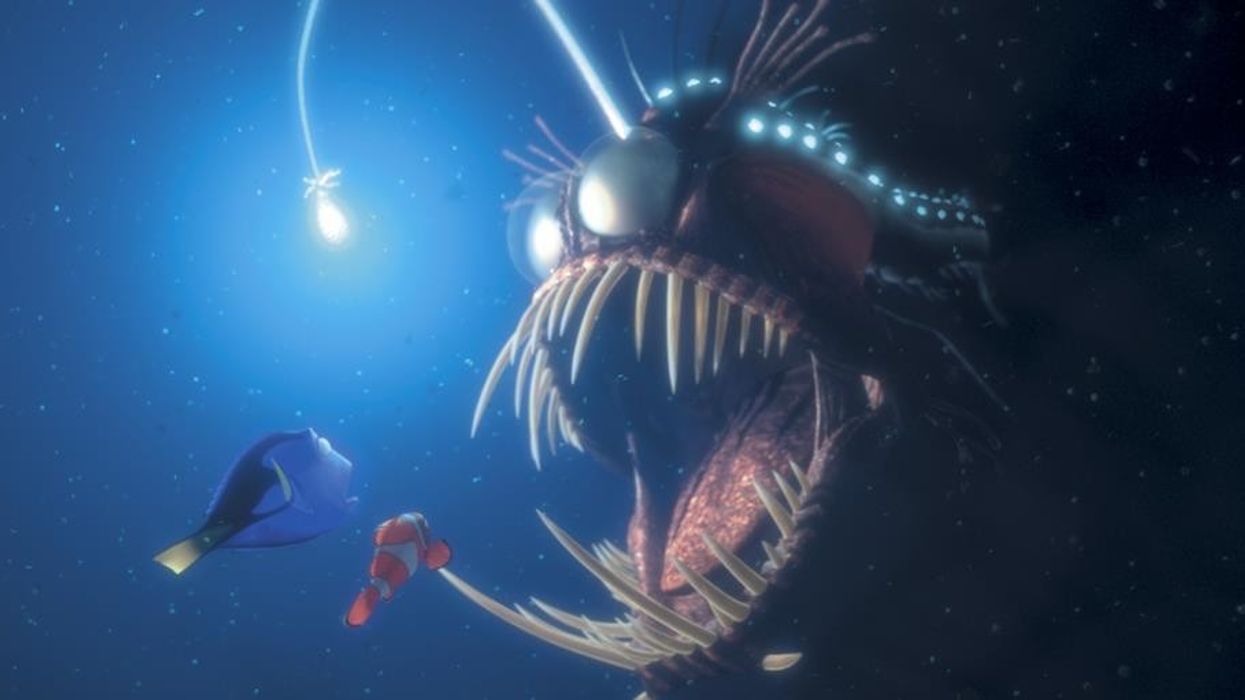How to Light Animated Worlds with Pixar's Director of Photography
"We use science to create something wonderful. We use story and artistic touch to get us to a place of wonder."

Danielle Feinberg was studying computer programming at Harvard when a professor screened the first Pixar computer animations in her class. A new world opened up for the young engineer; she could marry her two passions, coding and art. "That's what I want to do with my life," she thought.
Feinberg's ambitions took her to the place where it all started. Now Pixar's director of photography, she has worked on many modern animated classics, from A Bug's Life to Toy Story 2. She helped bring the underwater universe to life in Finding Nemo, an achievement that rested largely on the ability to render how light travels through the ocean.
In a new TED talk, Feinberg details the lighting process for computer animated films, which, because it involves actual lighting set-ups inside the computer, is more similar to a live-action director of photography than a computer animator. ("If I don’t put in lights, the final image that ends up on film would be black," she once told her alma mater.)
"Lighting, in practice, is placing lights inside a three-dimensional world," Feinberg said her in TED talk. Feinberg adds virtual lights to her scenes that appear as little icons she can place in that three-dimensional world—sometimes thousands in a single scene.
For Feinberg and Pixar, strict realism is less important than believability. "As I place a light, I think about what it might look like in real life, but balance that out with what we need artistically and for the story," said Feinberg.
But the end result is always rooted in science. "We use science and the world we know to ground ourselves in something relatable and recognizable," she said.

Finding Nemo
In Finding Nemo's early development, the Pixar team took a clip of underwater footage and recreated it in the computer. "Then we broke it back down to see which elements make up that underwater look," Feinberg said. "One of the most critical elements was how the light travels through the water."
Then they wrote code to create a light that mimicked the physics of underwater light, controlling the visibility and variations in color. "Objects close to the eye have their full, rich colors," explained Feinberg. "As light travels deeper into the water, we lose the red wavelengths, then the green wavelengths, leaving us with blue at the far depths."
The water movement was another matter entirely. "One important element to the feeling of being underwater is the surge and swell, or the invisible underwater current that pushes the bits of particulate around in the water. Another was the caustics, or the ribbons of light, like you might see on the bottom of a pool, that are created when the sun bends through the crests of the ripples and waves on the ocean's surface." Feinberg and her team also added fog beams, which orient the viewer in shots that don't show the ocean's surface.

"In the scene where the turtles do their roller coaster ride on the Australian current, it's really important we see deep into the underwater to understand what's happening, so we pushed the visibility of the water well past anything you would ever see in real life," said Feinberg. "Because in the end, we are not trying to recreate the scientifically correct real world; we're trying to create a believable world, one the audience can immerse themselves in to experience the story."
WALL-E
Animating WALL-E was incredibly challenging because the robot lacks a traditional face. And when Feinberg went in to light his scenes, she discovered a major issue.
"We got so geeked-out on making WALL-E this convincing robot that we made his binoculars practically optically perfect," she said. This meant that the triple lenses they had designed inside his binoculars—his veritable eyes—reflected light in a distracting manner. "He was starting to look glassy-eyed," said Feinberg, "which is a fundamentally awful thing when you are trying to convince an audience that a robot has a personality and he's capable of falling in love."
Feinberg started trying to block or tune down the flat-front, concave, and convex lenses, but nothing worked. Finally, in testing, a light was added that accidentally leaks into WALL-E's eyes, effectively lighting up his gray aperture blades.
"Suddenly, those aperture blades are poking through that reflection," she said. "Now we recognize WALL-E as having an eye. As humans, we have the white of our eye, the colored iris, and the black pupil. Now WALL-E has the black of an eye, the gray aperture blades, and the black pupil. Suddenly, WALL-E feels like he has a soul; like there's a character with emotion inside."
To watch the full video, head over to TED.com. And if you're interested in the very complex engineering that goes on at Pixar, check out this academic paper on physically-based lighting formulas written by two Pixar employees.














